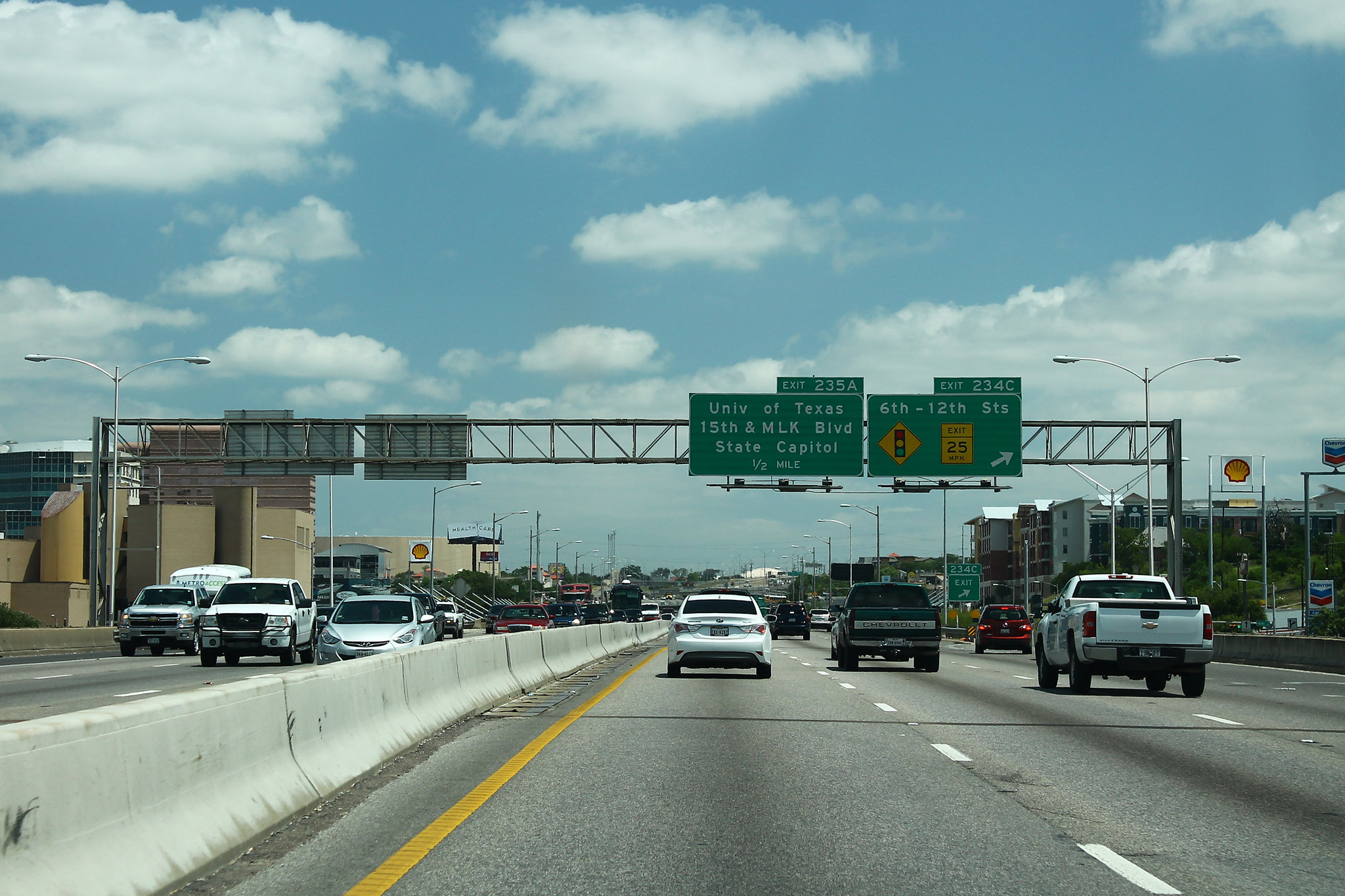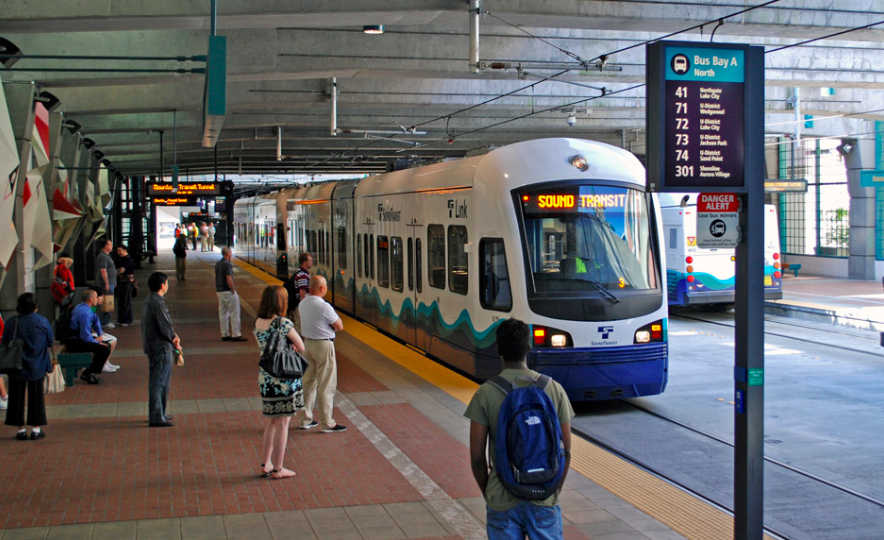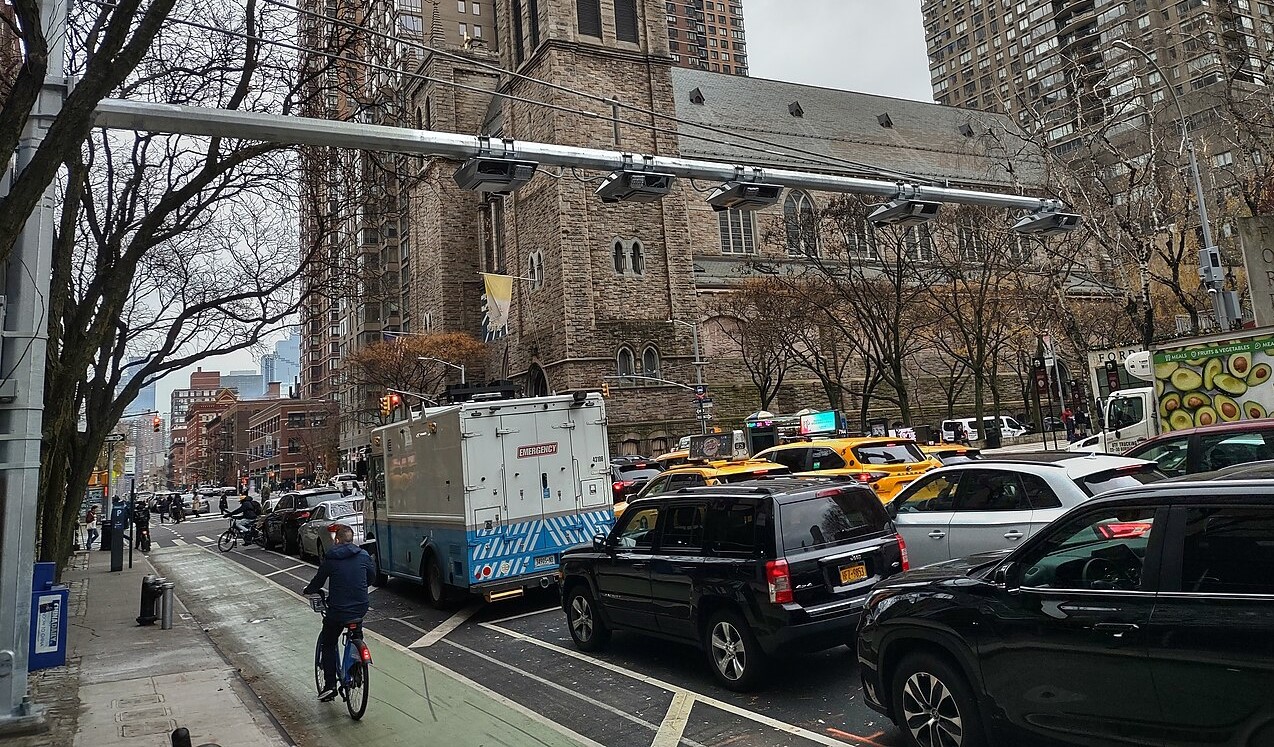Sponsored post: The Transportation Research Board’s 99th Annual Meeting will be held in Washington, D.C. from Jan. 12-16, 2020. Click here for more information.
More Americans are dying on high-speed roads because cities and states haven't built proper infrastructure to help people cross safely, a new study shows.
The number of pedestrian deaths on highways has soared 60 percent in a decade, even higher than the 53 percent rise in pedestrian fatalities on all roads since 2009, according to a report by the Insurance Institute for Highway Safety out this month.
The report delved into the 2,518 traffic fatalities on controlled-access freeways and interstates between 2015 and 2017. Three out of four of those killed by vehicles on highways were male and 55 percent were between the ages of 20 and 44. And of those, 42 percent were crashes that occurred when people attempted to cross the dangerous multi-lane corridors.
In many areas around the country, pedestrians are weighing the risks of a deadly encounter with a speeding vehicle with accessing shops and other businesses in their neighborhoods, the study found.
"This might be a case where people are crossing a highway and they don’t have a better way of getting there," said the study's author, IIHS Vice President of Research Jessica Cicchino. "In most cases, there aren’t overpasses to cross nearby, and in California, for a majority of the cases, there was housing on one side of the road and non-residential areas like shopping centers or bus depots on the other."
Eighty one percent of these deaths were in urban areas, with 58 percent located on stretches of roadway between residential and commercial areas. Half of fatalities occurred between 6 p.m. and midnight while many stores were still open, and 48 percent on these roadways occurred where the area was dark and poorly lit.
The risks of pedestrian deaths on these roads would almost certainly drop if localities improved lighting and built underpasses and overpasses in areas where crossing occurs, the report said. (Car-reduction strategies would also help, of course.)
"Countermeasures to deter pedestrians from entering these roadways — and for reducing the likelihood of a collision when they do — need to be implemented as part of a comprehensive effort to reduce pedestrian fatalities nationwide," the report said. "Improving roadway and vehicle lighting, constructing pedestrian overpasses and underpasses in areas frequently crossed, and promoting alternative means of traveling between residential and commercial areas could help."
It is an infuriating paradox that pedestrian and cyclist fatalities in traffic crashes have skyrocketed over the past decade while vehicles have gotten safer for drivers. That's due to the presence of longer, taller, and heavier SUVs on the roads and rising inequality in urban and suburban areas not served by frequent public transit where pedestrians walk near barelling traffic.
Researchers at IIHS, whose work is sponsored by auto insurers, know that larger cars are more dangerous for people on roadways and are advising auto companies to design vehicles with brighter headlights and more responsive braking systems that are safer for everyone.
"It’s something that we’re paying attention to now that pedestrian deaths are rising," Cicchino said. "We’re hoping other countermeasures like automatic emergency braking that protects pedestrians can prevent some crashes to begin with, front-crash prevention by 2022, and more and more of them are going to detect pedestrians and cyclists."
Another factor in deadly crashes is the speed that vehicles travel which has steadily increased on interstates. That's contributed to traffic deaths and injuries in densely populated areas that drivers regularly whiz through at and above 55 miles per hour, the speed where vehicles are 90 percent likely to kill a person in a crash.
"Speed limits are designed with the intention that people aren’t on these roads," Cicchino said. "The speeds on these roads aren’t compatible with having pedestrians around. the higher they are the less time you have to respond if they’re in the road and if there’s a crash they’re less likely to survive.
More than half of pedestrian deaths on interstates and other highways occurred at speed limits of 65 miles per hour and above while 17 percent of fatalities occurred in interchanges such as ramps, entrances, and exits, the study found.
Civic leaders and traffic engineers should lower speeds, redesign interchanges with painted or raised islands to calm traffic, or add physical barriers to keep people from walking across at all if it is truly impenetrable, Cicchino said.
"We need to have overpasses and underpasses that allow people to cross safely and if you have places with residential communities across the freeway might want to consider having physical barriers, transit or other kinds of options so people don’t have to run across a freeway to get where they need to go," she added.






